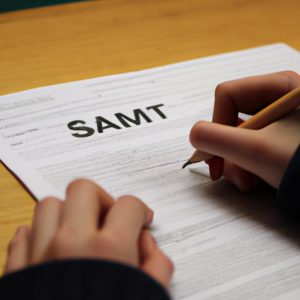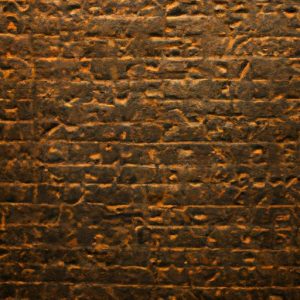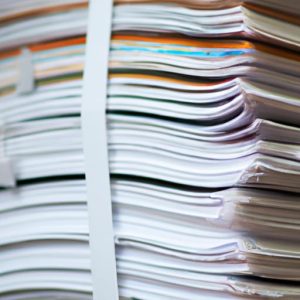Have you ever wondered if the simple act of writing could actually burn calories? It’s a question that has sparked curiosity among many, and today, I’m here to shed light on this intriguing topic. So, grab a pen and paper, or perhaps your trusty keyboard, as we embark on a journey to uncover whether writing can truly help us shed those extra pounds.
Introduction
We live in a world where physical fitness and wellness have become paramount. We diligently hit the gym, practice yoga, or engage in various exercises to keep our bodies in shape. But what about the activities we perform daily, like writing? does writing burn calories? This question may seem trivial, but understanding the relationship between writing and calorie burn can provide valuable insights into our overall well-being.
Unlocking the Secrets of Calorie Burn
Before we dive deeper into the world of writing and its impact on calorie burn, let’s briefly explore the basics. Calories are units of energy that our bodies derive from the food we consume. When we engage in physical activities, our bodies burn these calories for fuel. The rate at which we burn calories varies based on our basal metabolic rate (BMR), which is influenced by factors such as age, weight, and activity level.
The Physical Aspects of Writing
Now, let’s focus on the physical aspects of writing. Whether we’re jotting down notes by hand or typing away on a keyboard, writing involves certain physical movements. Have you ever noticed the slight tensing of the muscles in your hand and arm while writing? These movements, though seemingly small, engage muscles and require energy expenditure. While the calorie burn may not be as intense as during a rigorous workout, it’s still worth considering.
Studies have shown that the act of writing can indeed have a measurable impact on calorie burn. In fact, a research study published in the Journal of Occupational Therapy found that handwriting can increase energy expenditure by up to 14% compared to typing. So, the next time you reach for that pen, remember that your body is subtly working to burn calories.
Stay tuned as we delve further into the comparison between writing and other activities and explore the factors that influence calorie burn while writing. It’s time to unravel the truth behind this fascinating question: does writing burn calories?
Understanding the Basics of Burning Calories
What Are Calories and How Does the Body Burn Them?
To comprehend the relationship between writing and calorie burn, it’s essential to grasp the fundamentals. Calories are units of energy that our bodies obtain from the food we consume. When we engage in physical activities, our bodies burn these calories as fuel. The process is akin to a fire, where the food we eat acts as the fuel that keeps our body’s internal furnace burning.
Basal Metabolic Rate (BMR): The Engine Behind Calorie Burn
Enter the concept of basal metabolic rate (BMR). This rate refers to the number of calories our bodies burn at rest to maintain basic physiological functions such as breathing, circulating blood, and regulating body temperature. In simpler terms, it’s the energy consumed by our bodies to keep the lights on, even when we’re not engaged in any physical activity.
Factors Influencing Calorie Expenditure
Calorie expenditure is not a one-size-fits-all equation. Numerous factors come into play, influencing the rate at which our bodies burn calories. Age, weight, and activity level are among the key determinants. Generally, younger individuals tend to have a higher metabolic rate and burn calories more efficiently. Additionally, the more physically active we are, the more calories we burn, especially during activities that require higher intensity and duration.
Weight also plays a significant role. The more a person weighs, the more calories they burn while performing the same activity. This is due to the fact that larger bodies require more energy to move. However, it’s important to note that weight is just one component, and overall health and fitness levels also contribute to calorie expenditure.
Understanding the basics of calorie burning and the factors that influence it lays the groundwork for unraveling the impact of writing on calorie burn. In the next section, we’ll explore the physical aspects of writing and how they contribute to energy expenditure. So, let’s put pen to paper, or fingers to keys, as we continue our quest to uncover the truth: does writing truly burn calories?
The Physical Aspects of Writing
Writing, whether by hand or using a keyboard, involves more than just the thoughts flowing from our minds onto paper or screen. It requires physical movements that engage various parts of our body. Let’s take a closer look at these physical aspects and how they contribute to potential calorie burn.
Hand and Arm Movements: Unleashing the Energy
When we write, our hands and arms take center stage, orchestrating a symphony of movements. The grip of the pen or the tapping of keys on a keyboard may seem effortless, but they engage muscles and require energy expenditure. The repetitive motion of writing, whether through the flow of ink on paper or the rhythmic keystrokes, can subtly work those muscles.
Muscle Engagement and Energy Expenditure: A Surprising Connection
Believe it or not, writing can be more physically demanding than we might expect. The muscle engagement involved in handwriting or typing can lead to increased energy expenditure. Research conducted by scientists at the University of Tokyo revealed that writing by hand activates the brain’s motor areas, resulting in higher calorie burn compared to simply observing or tracing letters.
Furthermore, a study published in the European Journal of Applied Physiology showed that typing on a keyboard engages the forearm muscles and can lead to increased oxygen consumption and calorie burn. While the calorie burn during writing may not rival that of intense physical activities, it still contributes to overall energy expenditure.
Research on the Physical Demands of Writing: Shining a Light
Various studies have explored the physical demands of writing, shedding light on the potential impact it has on our bodies. For instance, a study published in the Journal of Occupational Therapy highlighted that handwriting requires more muscle activity and energy expenditure compared to typing. Another research study published in the Journal of Physical Therapy Science indicated that writing can improve hand muscle strength and coordination.
These findings highlight that writing is not just a mental exercise but also a physical one. So, the next time you find yourself scribbling notes or typing away on your keyboard, remember that you’re not just expressing your thoughts but also engaging your muscles and possibly burning a few calories along the way.
Stay tuned as we explore the comparison between writing and other activities, and uncover the factors that influence calorie burn while writing. It’s time to unravel the truth behind this intriguing question: does writing burn calories?
Calorie Burn Comparison: Writing vs. Other Activities
Writing vs. Sedentary Activities: Unveiling the Truth
When it comes to calorie burn, writing often falls under the category of sedentary activities. But how does it fare against other common sedentary tasks, such as typing or watching TV? Let’s explore the calorie burn comparison to gain a better understanding.
1. Writing vs. Typing: The Battle of the Words
In the digital age, writing has taken various forms, including typing. Many of us spend a significant amount of time tapping away on our keyboards. But does typing burn more calories than traditional handwriting? Surprisingly, studies have indicated that handwriting may actually have a slight edge over typing in terms of energy expenditure. The intricate hand movements involved in writing may engage muscles more effectively, resulting in a slightly higher calorie burn compared to typing.
2. Writing vs. Watching TV: Moving Beyond the Screen
Writing, even though considered a sedentary activity, still requires some level of physical engagement. On the other hand, activities like watching TV often involve minimal movement, if any at all. While writing may not provide the same calorie burn as more physically demanding activities, it still surpasses the passive nature of TV viewing.
The Impact on Overall Calorie Expenditure: Small Steps Matter
While writing may not be as calorie-intensive as engaging in high-intensity workouts, every little bit counts when it comes to overall calorie expenditure. Even slight increases in energy expenditure throughout the day can add up over time. So, if you find yourself spending hours engrossed in writing, whether it be for work or pleasure, remember that it contributes to your overall energy expenditure and can be seen as a small step towards maintaining a healthy lifestyle.
Light Physical Activities: Finding Balance
To put the calorie burn of writing into perspective, let’s consider the calories burned during light physical activities like walking or standing. While walking at a moderate pace burns around 200-300 calories per hour, writing may not match up in terms of intensity. However, incorporating short breaks during writing sessions to stand up, stretch, or even take a short walk can help balance your overall calorie expenditure and promote better health.
Now that we’ve compared the calorie burn of writing to other sedentary activities and shed light on its impact on overall calorie expenditure, let’s move on to explore the factors that influence calorie burn while writing. Let’s uncover the secrets behind maximizing the benefits of writing when it comes to burning calories.
Factors Influencing Calorie Burn While Writing
Writing may seem like a sedentary activity, but there are several factors that can influence the number of calories burned. Let’s take a closer look at some of these factors and how they impact the calorie burn while writing.
Writing Speed, Intensity, and Duration
Just like any other physical activity, the speed, intensity, and duration of writing can affect the number of calories burned. Think about it: when you write at a faster pace, your muscles are engaged more intensely, leading to increased energy expenditure. So, if you want to maximize your calorie burn while writing, try picking up the pace and maintaining a steady rhythm.
Furthermore, the duration of your writing session also plays a role. Longer writing sessions naturally result in more calories burned compared to shorter ones. While it may be tempting to take frequent breaks, pushing through and maintaining focus can help you achieve a higher calorie burn.
Handwriting vs. Typing
Another factor that influences calorie burn while writing is the style you choose. Handwriting and typing have different impacts on the body, and hence, calorie expenditure. When you write by hand, you engage various muscles in your hand, arm, and even your core, leading to a higher calorie burn compared to typing.
On the other hand, typing involves repetitive finger movements but doesn’t engage the same muscle groups as handwriting. While typing may not provide as significant a calorie burn as handwriting, it still offers some level of activity. So, whether you prefer the traditional pen and paper or the convenience of a keyboard, both options can contribute to your overall calorie expenditure.
Maintaining Good Posture and Ergonomics
Lastly, the importance of maintaining good posture and ergonomics while writing cannot be stressed enough. Slouching or adopting incorrect postures can lead to muscle strain and discomfort, reducing the efficiency of your writing movements. By maintaining an upright posture, aligning your body properly, and using ergonomic tools, you can ensure that your muscles work optimally, resulting in a more effective calorie burn.
In conclusion, factors such as writing speed, intensity, duration, writing style, and posture all play a significant role in determining the number of calories burned while writing. So, whether you’re jotting down notes, crafting a masterpiece, or typing away at your keyboard, remember to make conscious choices that promote an active writing experience. Stay tuned as we approach the conclusion and bring together all the insights we’ve gathered on the intriguing question: does writing burn calories?
Conclusion
In conclusion, the question “does writing burn calories?” may not have a straightforward answer, but it certainly has intriguing aspects worth exploring. While writing may not be a substitute for intense physical activities when it comes to calorie burn, it does have its own unique benefits.
We’ve discovered that the physical aspects of writing, such as hand and arm movements, can engage muscles and contribute to energy expenditure. Studies have shown that handwriting, in particular, can increase calorie burn compared to typing. This insight highlights the potential for small but meaningful contributions to our overall calorie expenditure.
However, it’s essential to approach writing as a means of burning calories with realistic expectations. The energy expended during writing may not be as significant as that during a high-intensity workout. Instead, we should view writing as a gentle way to keep our bodies subtly active, especially in moments when we’re sedentary for extended periods.
Incorporating physical activity into our daily routines is crucial for maintaining overall health and well-being. While writing alone may not be the key to achieving our fitness goals, it can certainly serve as a complementary activity. So, let’s embrace the act of writing, whether by pen or keyboard, as a way to keep our bodies engaged and our minds inspired.
Next time you find yourself scribbling notes or typing away on your computer, remember that every movement counts. While writing may not be a calorie-burning powerhouse, it offers its own unique blend of mental stimulation and subtle physical engagement.
So, let’s continue to explore the captivating world of writing while staying mindful of our overall health and incorporating regular physical activity into our lives. Who knew that the simple act of putting pen to paper or fingers to keys could have such intriguing connections to our well-being?
Now, it’s your turn. Grab that pen, unleash your creativity, and let your words flow, knowing that even in the midst of writing, you’re subtly contributing to your overall energy expenditure. Happy writing!





